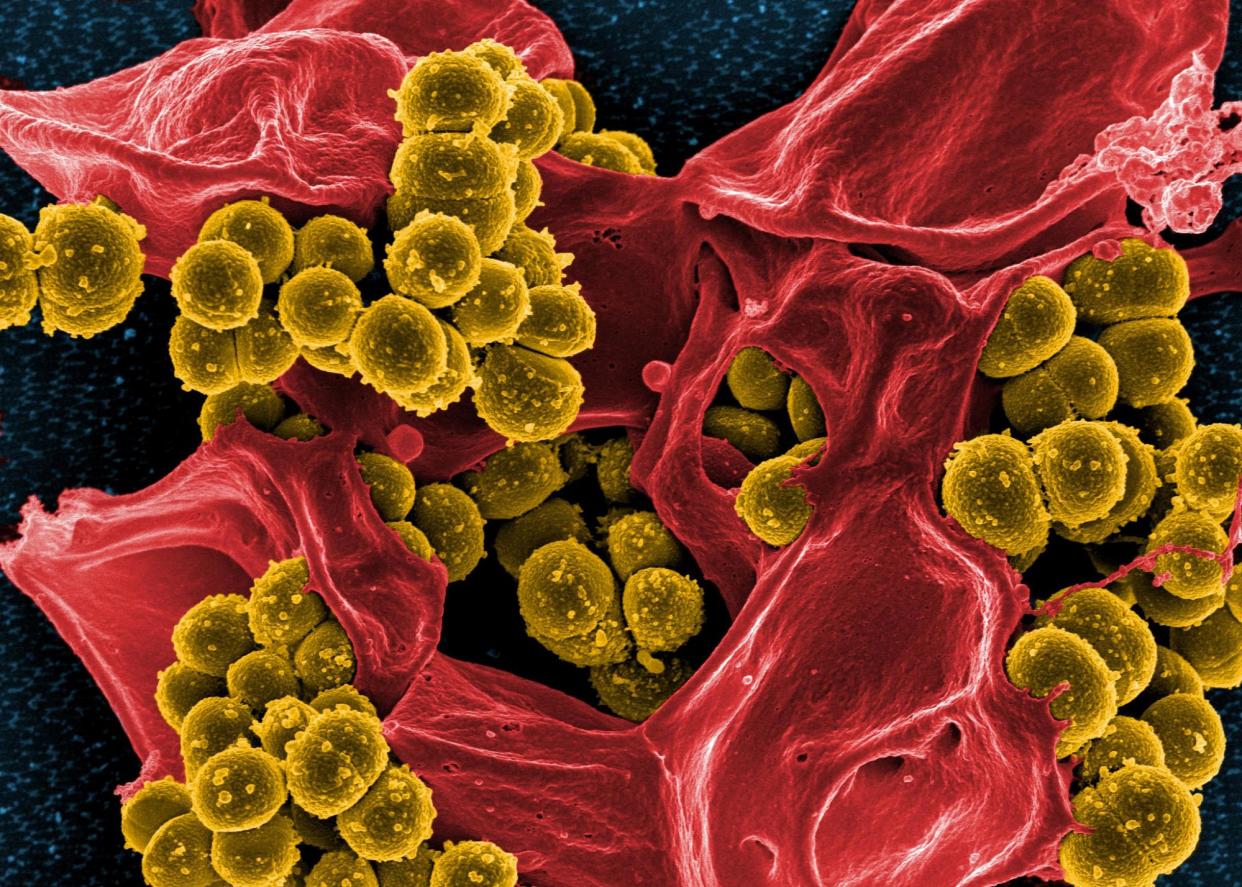AI used to predict potential new antibiotics in groundbreaking study

A new study used machine learning to predict potential new antibiotics in the global microbiome, which study authors say marks a significant advance in the use of artificial intelligence in antibiotic resistance research.
The report, published Wednesday in the journal Cell, details the findings of scientists who used an algorithm to mine the “entirety of the microbial diversity that we have on earth – or a huge representation of that – and find almost 1m new molecules encoded or hidden within all that microbial dark matter”, said César de la Fuente, an author of the study and professor at the University of Pennsylvania. De la Fuente directs the Machine Biology Group, which aims to use computers to accelerate discoveries in biology and medicine.
Without such an algorithm, de la Fuente said, scientists would have had to use traditional methods like collecting water and soil to find molecules within those samples. That can be challenging because microbes are everywhere – from the ocean to the human gut.
“It would have taken many, many, many, many years to do that, but with an algorithm, we can sort through vast amounts of information, and it just speeds up the process,” de la Fuente said.
Related: Scientists use AI to discover new antibiotic to treat deadly superbug
The research is urgent to public health, the author said, because antimicrobial resistance caused more than 1.2 million deaths in 2019. That number could increase to 10 million deaths annually by 2050, according to the World Health Organization (WHO).
While de la Fuente said he sees the study, which produced the “largest antibiotic discovery effort ever”, as a watershed moment in the potential benefits of artificial intelligence for research, he acknowledged that bad actors could potentially “develop AI models to design toxins”.
He said his laboratory has implemented safeguards to store them and ensure molecules are not able to self-replicate. Notably, biosecurity safeguards were not necessary for this study because these were “inert molecules”.
While artificial intelligence has become a hot-button issue in recent years, de la Fuente said he started using AI in antibiotics research about a decade ago.
“We have been able to just accelerate the discovery of antibiotics,” de la Fuente said. “So instead of having to wait five, six years to come up with one candidate, now, on the computer, we can, in just a few hours, come up with hundreds of thousands of candidates.”
Before the US Food and Drug Administration approves an antibiotic, it typically undergoes years of study through laboratory research and clinical trials. These various stages can take 10 to 20 years.
For this study, the researchers collected genomes and meta-genomes stored in publicly available databases and looked for DNA snippets that could have antimicrobial activity. To validate those predictions, they used chemistry to synthesize 100 of those molecules in the laboratory and then test them to determine if they could actually kill bacteria, including “some of the most dangerous pathogens in our society”, de la Fuente said.
79% of the molecules, which were representative of the 1m molecules discovered, could kill at least one microbe – meaning they could serve as a potential antibiotic.
Antibiotic resistance is an increasing concern because of the misuse and overuse of antimicrobials in humans, animals and plants, according to the WHO.
The study authors have made this data and code freely available for anyone to access with the goal of “advancing science and benefiting humanity”, de La Fuente said.
He hopes that his team and other researchers will conduct additional investigation on the top candidates for potential antibiotic drugs. “Then if that goes well, it will go to phase one clinical trials, but we’re still far from that,” he said.
This is not the first study in biology that made significant use of AI. Google DeepMind recently released the latest version of AlphaFold, a program that predicts how proteins will interact with other molecules and ions, which could produce breakthroughs in fields as varied as cancer therapy and crop resilience.
Lisa Messeri, an anthropologist of technology at Yale University, said that machine learning and AI are “certainly excellent for some projects in science”, but not for all.
“We simply ask that researchers and research programs continue to be thoughtful about when they choose to apply these methods and not curtail projects that don’t necessarily require the use of these much-hyped and focused-on tools,” she said.
Some have raised the concerns about AI, including that it could replace humans in certain jobs – specifically in conducting scientific research.
De la Fuente argues AI will involve a collaboration between humans and machines.
Anthony Gitter, a University of Wisconsin-Madison associate professor of biostatistics and medical informatics who uses machine learning in biological experiments, says the “significance of the advance” in the Cell paper “was due to top-tier bioinformatics research as opposed to automated science enabled by AI”.
“The importance of this research is that it successfully harnesses widespread microbial genomic data, uses machine learning to identify candidate antimicrobial peptides and extensively studies those predicted peptides computationally and experimentally to show why they are valuable,” Gitter said.


